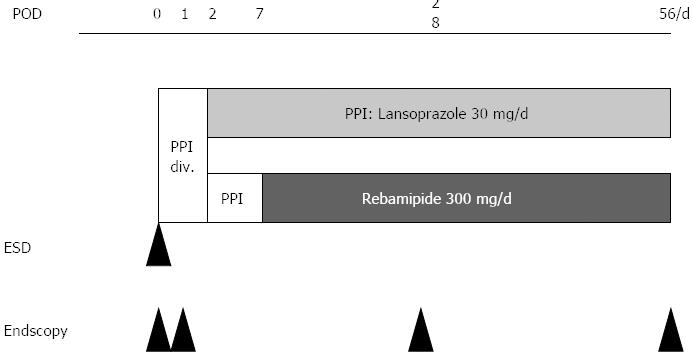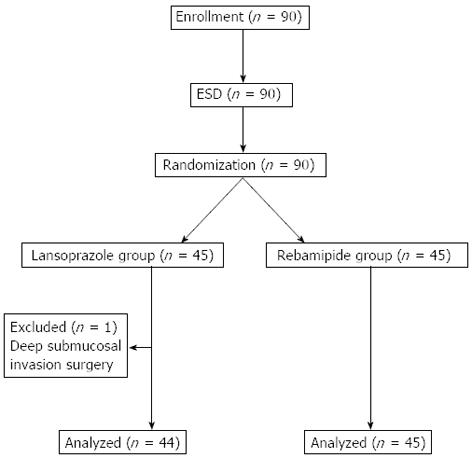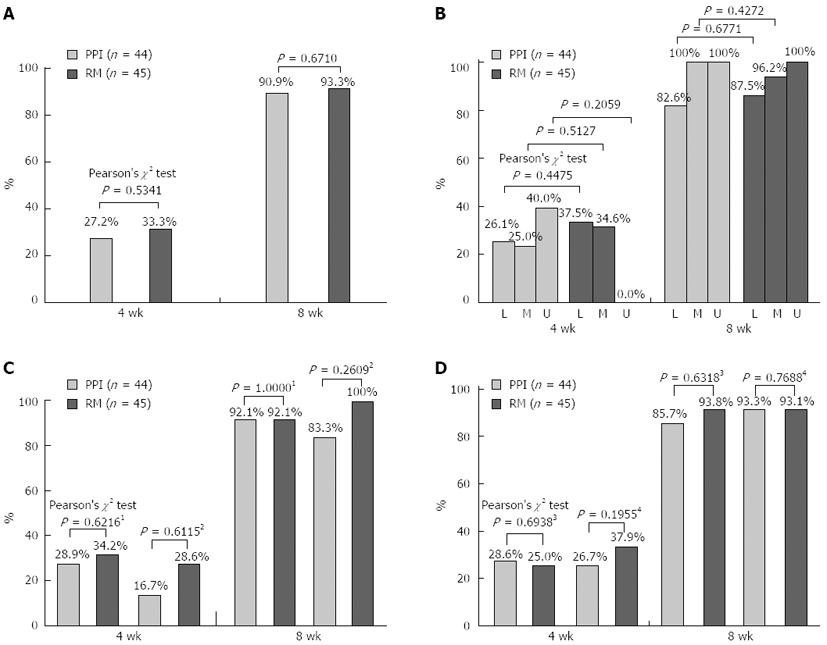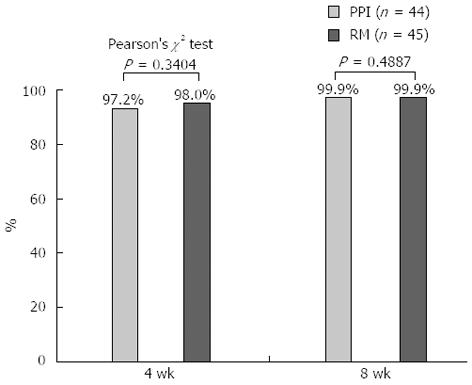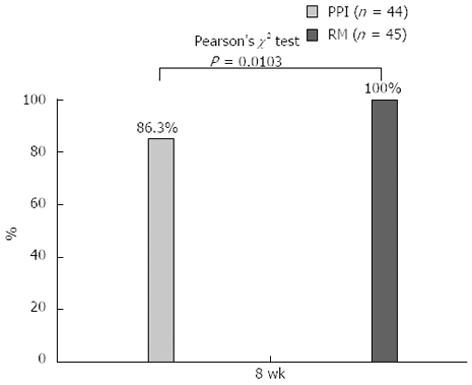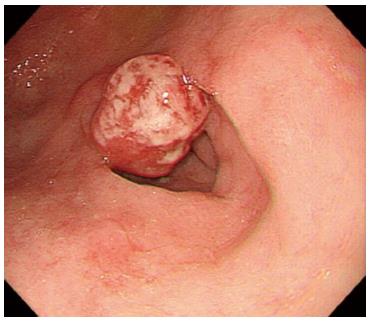Copyright
©2013 Baishideng Publishing Group Co.
World J Gastroenterol. Sep 14, 2013; 19(34): 5706-5712
Published online Sep 14, 2013. doi: 10.3748/wjg.v19.i34.5706
Published online Sep 14, 2013. doi: 10.3748/wjg.v19.i34.5706
Figure 1 Study design.
After ESD, all patients were administered an intravenous infusion of lansoprazole (20 mg; Takepron; Takeda Pharmaceutical, Osaka, Japan) every 12 h for 2 d, and received oral lansoprazole (30 mg/d) for 5 d. On postoperative day 7, the patients were randomly assigned to 2 groups and received either lansoprazole at a dose of 30 mg/d orally (PPI group; n = 45), or rebamipide (Mucosta; Otsuka Pharmaceutical Co., Tokyo, Japan) at a dose of 300 mg orally, 3 times a day (n = 45) for 8 wk. ESD: Endoscopic submucosal dissection; PPIs: Proton-pump inhibitors; div.: Drip intravenous infusion; POD: Postoperative days.
Figure 2 Flow chart of study participants.
ESD: Endoscopic submucosal dissection.
Figure 3 Rates of healing in both groups.
A: The rates of healing to S stage in both groups; B: The rates of healing to S stage in both groups according to resected location. L: Low stomach, M: Middle stomach; U: Upper stomach. C: The rates of healing to S stage in both groups. 1Helicobacter pylori (H. pylori) positive 2H. pylori negative. D: The rates of healing to S stage in both groups in atrophic gastritis. 3Closed type; 4Open type. RM: Rebamipide.
Figure 4 Reduction ratio of the endoscopic submucosal dissection-induced ulcers in both groups.
PPI: Proton-pump inhibitor; RM: Rebamipide.
Figure 5 Proportion of patients who developed a flat scar after ulcer healing in both groups.
PPI: Proton-pump inhibitor; RM: Rebamipide.
Figure 6 At 8 wk, granulation lesions following ulcer healing in the proton-pump inhibitors treated group.
- Citation: Takayama M, Matsui S, Kawasaki M, Asakuma Y, Sakurai T, Kashida H, Kudo M. Efficacy of treatment with rebamipide for endoscopic submucosal dissection-induced ulcers. World J Gastroenterol 2013; 19(34): 5706-5712
- URL: https://www.wjgnet.com/1007-9327/full/v19/i34/5706.htm
- DOI: https://dx.doi.org/10.3748/wjg.v19.i34.5706









